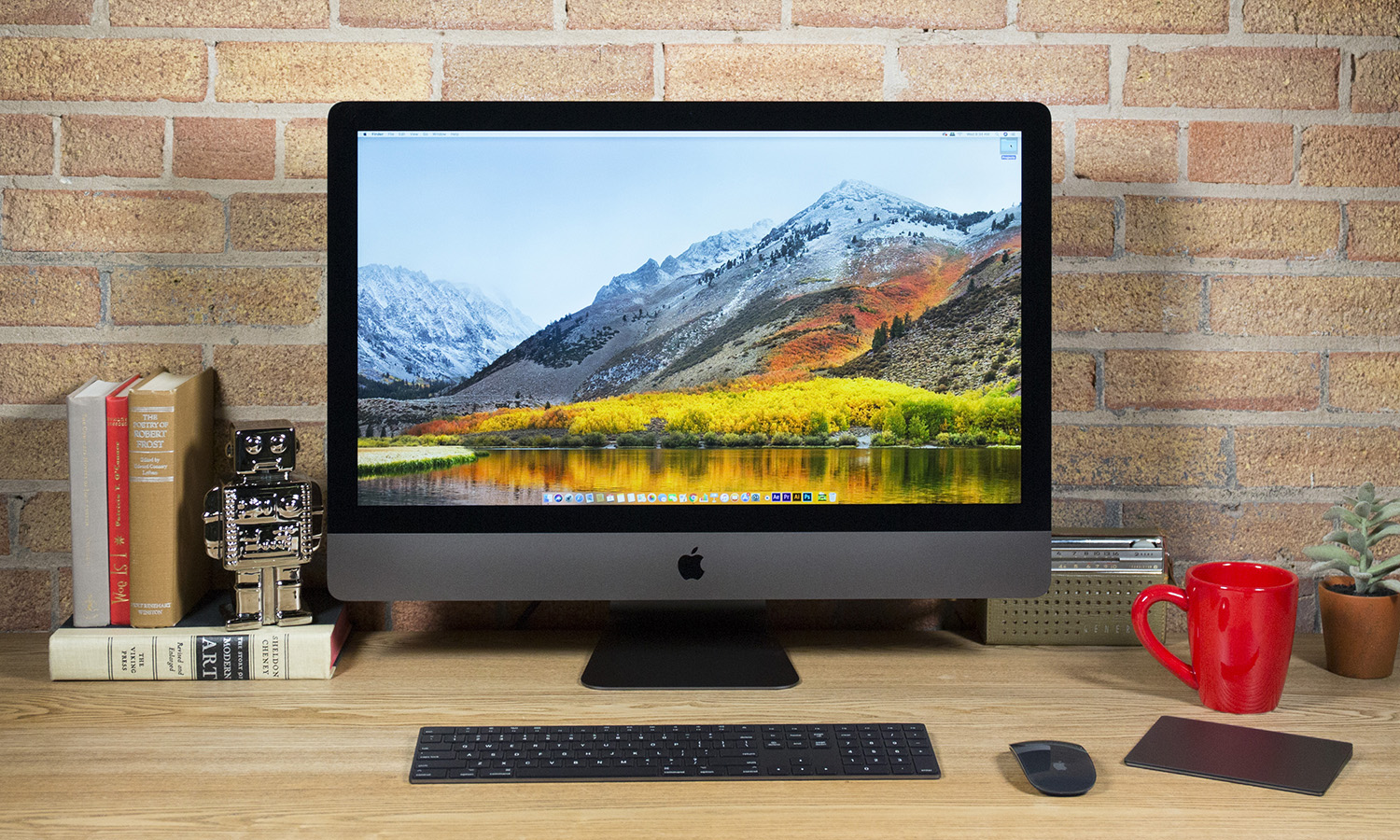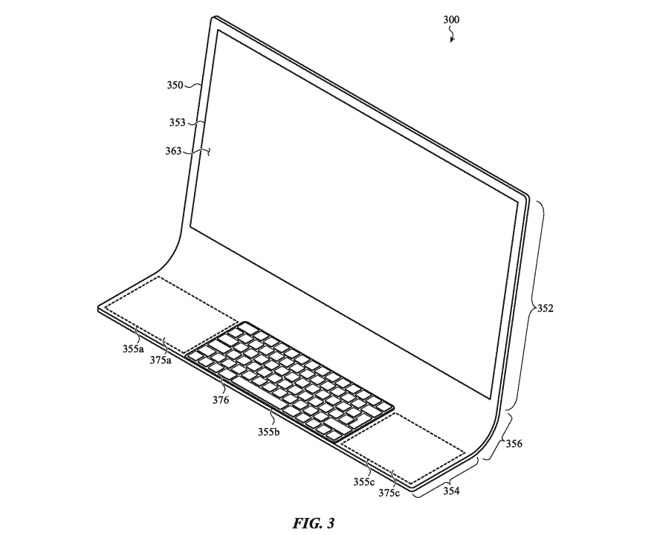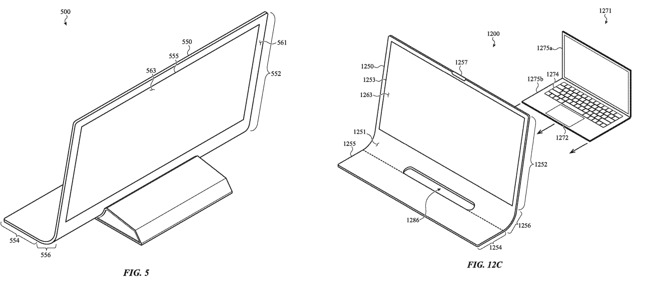The next iMac design looks straight out of Star Trek
The first new design in more than a decade.

Apple may redesign the iMac for the first time in 16 years. And it looks like it could be a radical departure from the last form factor: a single sheet of curved glass that sits on your desk like some kind of Star Trek Enterprise control.
At least, Apple designers Keith Hendren, Paul Wang, Adam Garelli, Brett Degner, Christiaan Ligtenberg, and Dinesh Mathew have been working on it, according to this new patent published by the United States Patent and Trademark Office unearthed by Apple Insider.
Check it out:

What is it?
The patent — titled “Electronic Device with Glass Housing Member” — describes a single sheet of ultra-thin glass that curves from your desk up into the sky. The base of the curve is flat, allowing it to hold the keyboard and trackpads on both sides of the working area.
- These are the best all-in-one computers right now
The upper part of the curve wouldn’t hold any electronics but the flat displays. On the back, a polygonal wedge houses the Mac’s guts. The wedge itself holds the computer in ports (see below, left).
The design may actually have an embedded capacitive keyboard on it — presumably with haptic feedback. After all, Hendren — a product designer for the Macintosh Architecture Group — previously worked on MacBook in-key capacitative touch sensors according to AppleInsider. However, you may also choose to use your own keyboard, which you can rest on top of that horizontal flat area of the curved iMac.
It’s a beautiful design worthy of Picard’s Enterprise.
Sign up to get the BEST of Tom's Guide direct to your inbox.
Get instant access to breaking news, the hottest reviews, great deals and helpful tips.
But wait, because there’s something even more radical that we haven’t seen in decades: a variant that is designed as a dock station for the MacBook, which would somehow slide in through a hole, as shown in this illustration.

The evolution of the Macintosh
If these projects really come to the Apple Store at one point, it will be quite the revolution.
It was in 2004 when Apple adopted the current form iMac of a panel with the screen and guts plus an aluminum base holding it. That form factor has been only refined through all these years with thinner and thinner screens and chins. But beyond that and changing materials —from plastic and glass to aluminum and glass — it has remained more or less the same for a very long time.
Before that, we only saw significant changes in the Macintosh in 1998, when Apple changed its iconic first Macintosh design into the iMac. 2002 brought another radical change — a semi-spherical base with a floating flat panel that held the display alone through a balanced, stainless steel arm. And then in 2004, the form factor that we still have today.
A MacBook docking station would even be a more radical thing. The last time we saw that was in the amazing and beloved PowerBook Duo, a line of subnotebooks made from 1992 to 1997. The Duo had a mechanized docking station that allowed you to insert your computer into a slot to instantly turn it into a desktop computer, complete with standalone display, expanded slots, and additional hard drive storage.
The idea of Apple making something like that again has an irresistible allure for old timers like myself.
It may not be farfetched to think that we will see something like these two designs — or another radical change — in the near future. With Jony Ive out, it won’t be surprising for Apple designers to establish a new visual code for the next decade. And, like it did in 1984, 1998, and 2004, it may all start with the Macintosh.
Watch our iMac 2020 news page for all the latest developments and announcements for current and upcoming Apple iMac models.
Jesus Diaz founded the new Sploid for Gawker Media after seven years working at Gizmodo, where he helmed the lost-in-a-bar iPhone 4 story and wrote old angry man rants, among other things. He's a creative director, screenwriter, and producer at The Magic Sauce, and currently writes for Fast Company and Tom's Guide.

